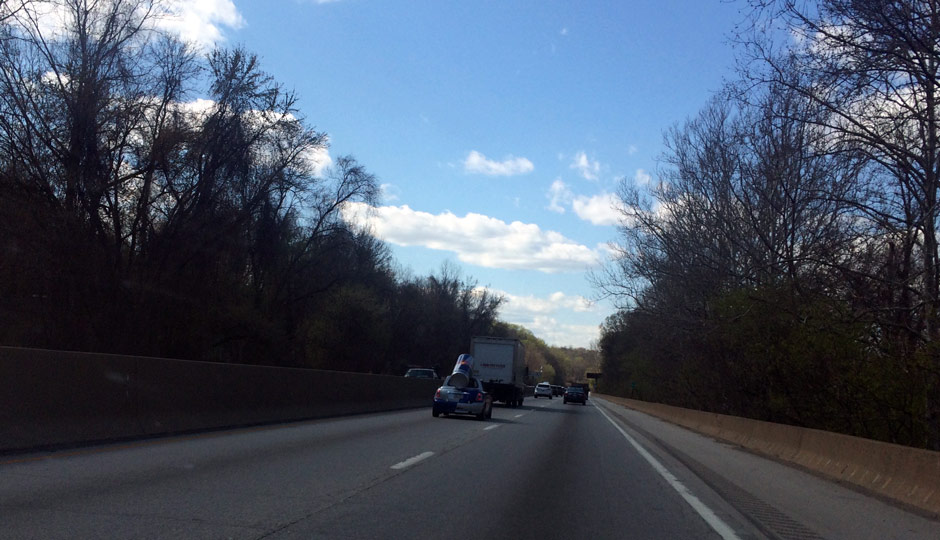PennDOT Will Start Opening Shoulder Lane to Traffic on I-76

The Schuylkill Expressway on a relatively traffic-free day.
The Schuylkill Expressway is probably the most hated road in Philadelphia. Everyone who’s driven on it hates it. Our own Sandy Hingston chronicled the 10 worst types of drivers on the despised road last year.
But PennDOT has a plan to alleviate congestion — without any additional construction work. During rush hour, drivers will be allowed to use the shoulder as an additional lane.
PennDOT revealed the plan at the Philadelphia Business Journal’s 2016 economic conference yesterday. “We know we need to do something, and we know we are restricted by the steep slope of the bedrock on the one side and the river on the other side,” PennDOT secretary Leslie Richards said. There is no timeframe for this change yet, however.
This isn’t the only plan PennDOT has for the highway. It’s also working on a partnership with SEPTA to show drivers the next train arrivals at Conshohocken Station, as well as some new technology like ramp metering and digital signage.
The Schuylkill Expressway was recently included on a list of the 50 worst traffic bottlenecks in the country. The stretch of I-76 between City Avenue and Roosevelt Boulevard came in at No. 36, while the stretch of I-676 between the Schuylkill and 24th Street was No. 47.
There have been plans to alter the Schuylkill to alleviate traffic congestion for decades. Previously, politicians floated proposals to turn the Schuylkill into a double-decker expressway. And perhaps the opening of a third lane will alleviate congestion a little at first. But it’s unlikely to make a long-term dent in rush-hour traffic.
It’s called “triple convergence.” In short, traffic tends to expand to meet the capacity of the road. When road capacity expands, for example, people quickly learn that the new or expanded road isn’t congested. Everyone flocks to it. And soon it’s congested. Opening up the shoulder as a third lane on the Schuylkill Expressway might be a cool short-term fix, but it probably doesn’t help anything in the long run.
Of course, there are still benefits, as Anthony Downs wrote in an issue of Access in 2004:
The Principle of Triple Convergence does not mean that expanding a congested road’s capacity has no benefits. After expansion, the road can carry more vehicles per hour than before, no matter how congested it is, so more people can travel on it at one time. Also, the periods of maximum congestion may be shorter, and congestion on other routes may be less.
Even if it won’t do much, opening up another lane on the Schuylkill seems like an idea worth trying mainly because it’s cheaper than any massive road-building project. But it’s no panacea. No matter what, you’ll probably be sitting on traffic on the Schuylkill until the end of time.
Follow @dhm on Twitter.